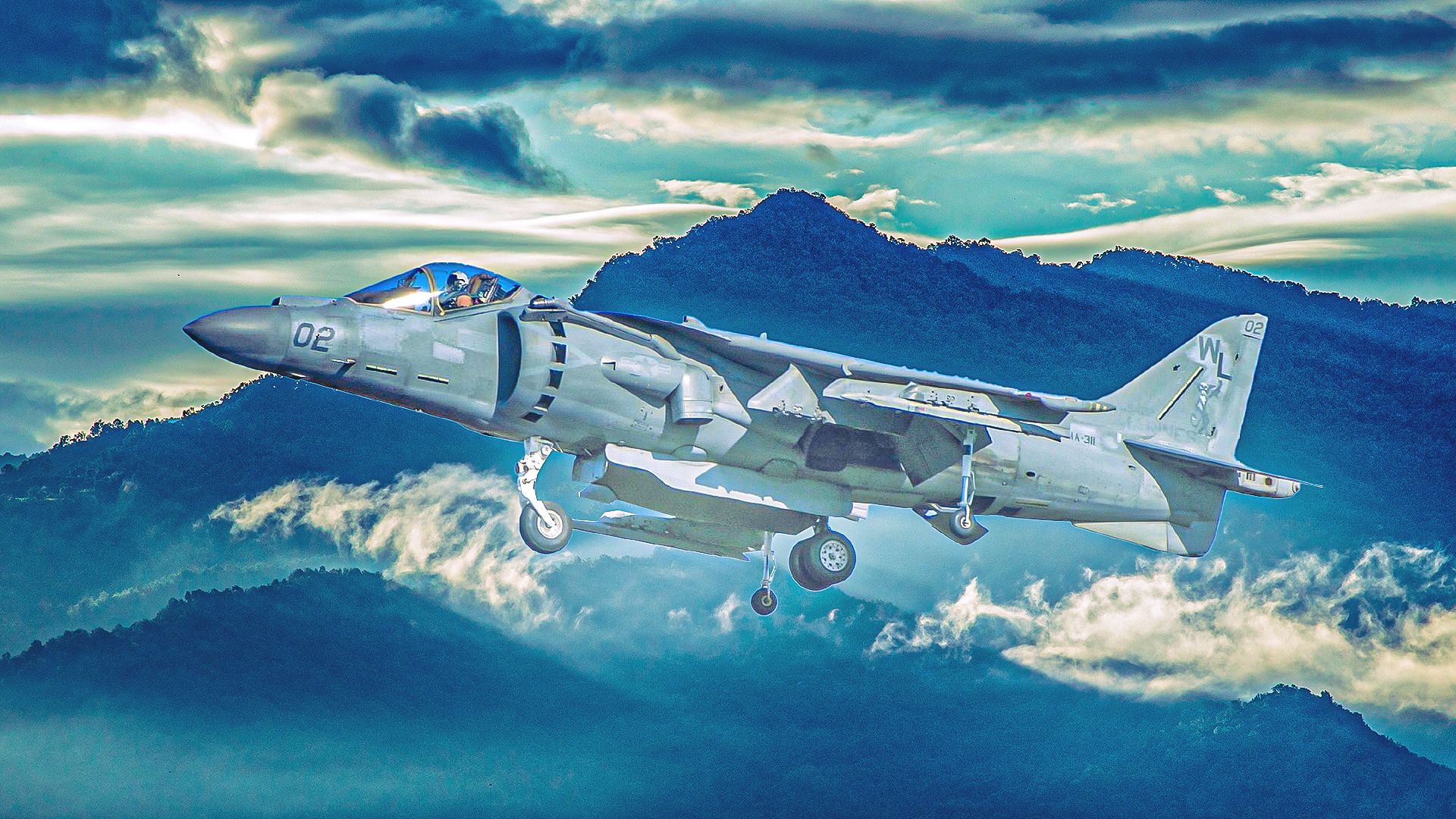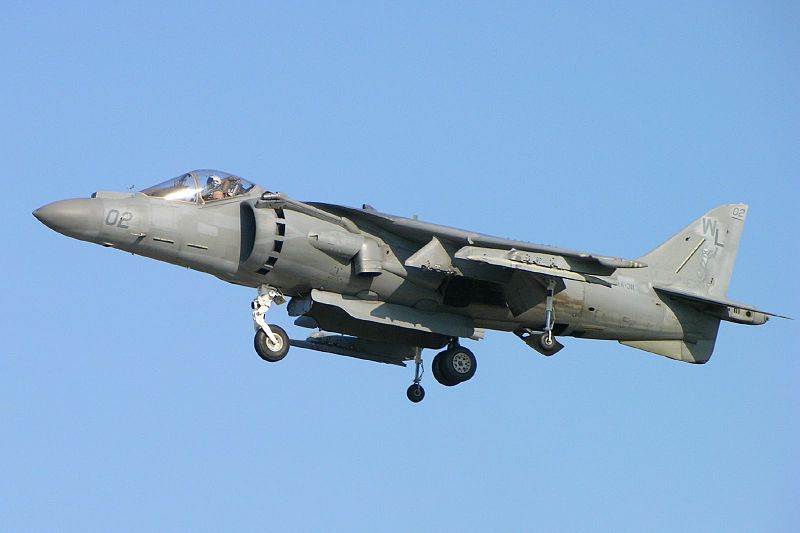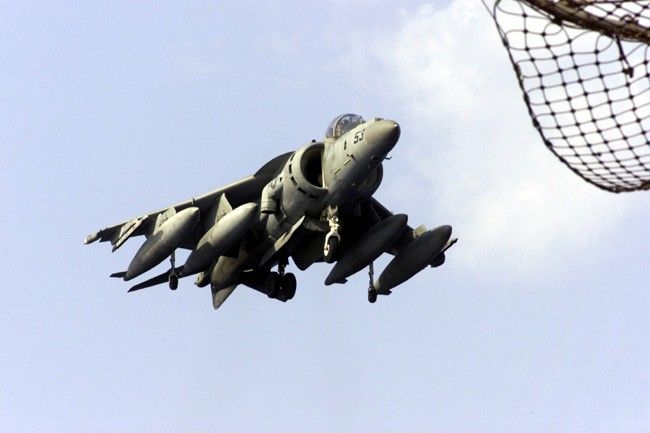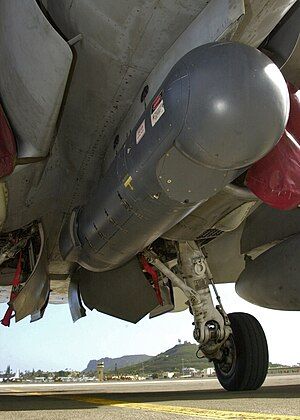Summary
- The AV-8B Harrier II is the only fixed-wing V/STOL aircraft in the free world, boasting a unique design history.
- The Harrier II has a storied operational history, including significant contributions during Operation Desert Storm and GWOT.
- Despite its significant contributions to US military aviation, the AV-8B Harrier II era came to an end in 2024 with the graduation of its last two student pilots.
The McDonnell Douglas (now Boeing) AV-8B Harrier II “jump jet” is a legend in the US Marine Corps aviation community, and rightfully so.
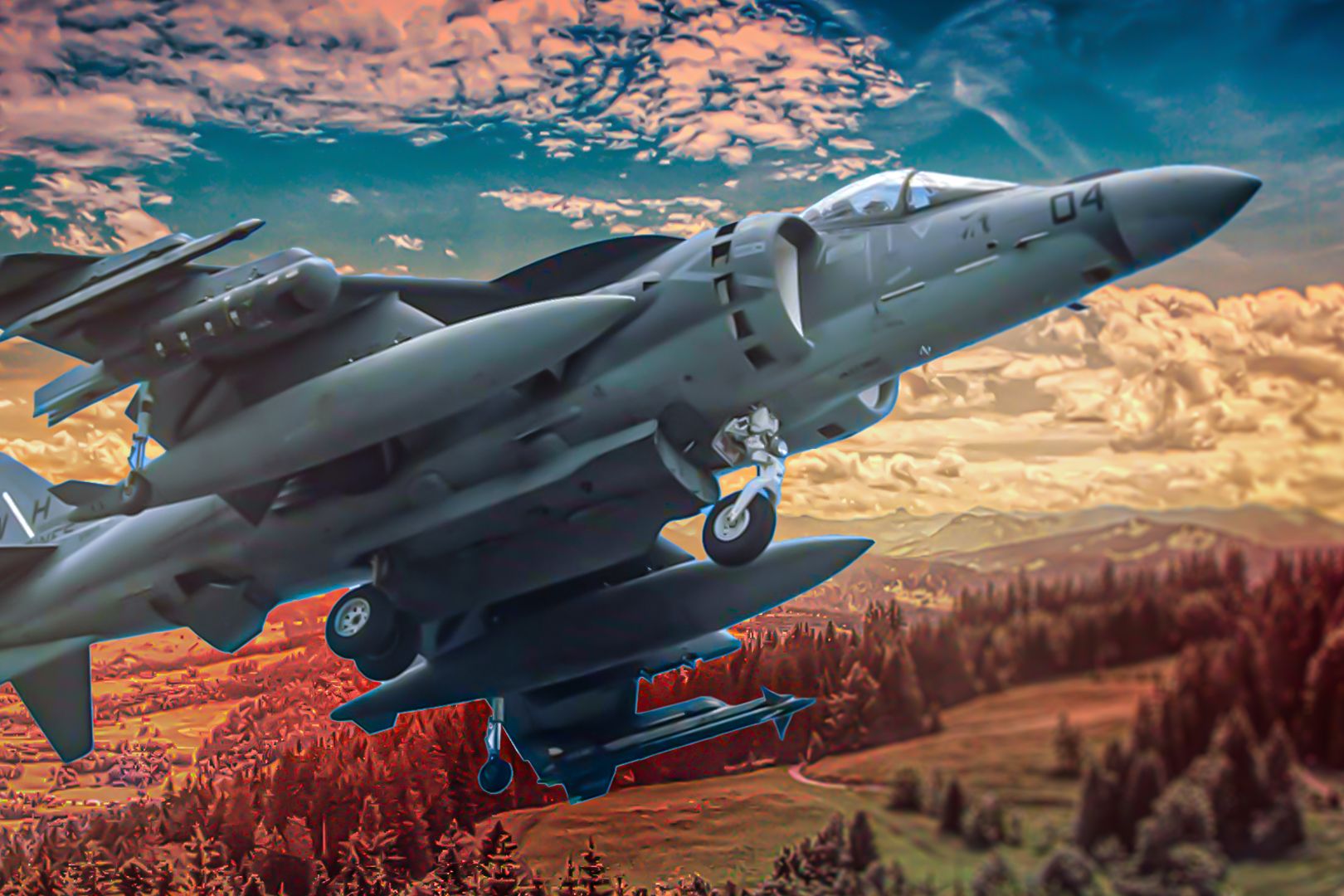
Related
5 Things To Know About The US Marine Corps AV-8 Harrier II
The Harrier II has been faithfully serving the US Marine Corps for four decades. Here are 5 facts about this venerable warbird.
Simple Flying takes a look at how and why the Harrier attained such legendary status via an examination of the warbird’s operational history and its impact (both literal and figurative) on US military aviation.
Uniqueness
Q: How do you catch a unique rabbit?
A: Unique up on it.
That silly joke aside, Naval History and Heritage Command captures the point I’m trying to drive home here:
“The Harrier today is one of the truly unique and most widely known of military aircraft. It is unique as the only fixed wing V/STOL aircraft in the free world. It also is unusual in the international nature of its development, which brought the design from the first British P.1127 prototype to the AV-8B Harrier II of today.”
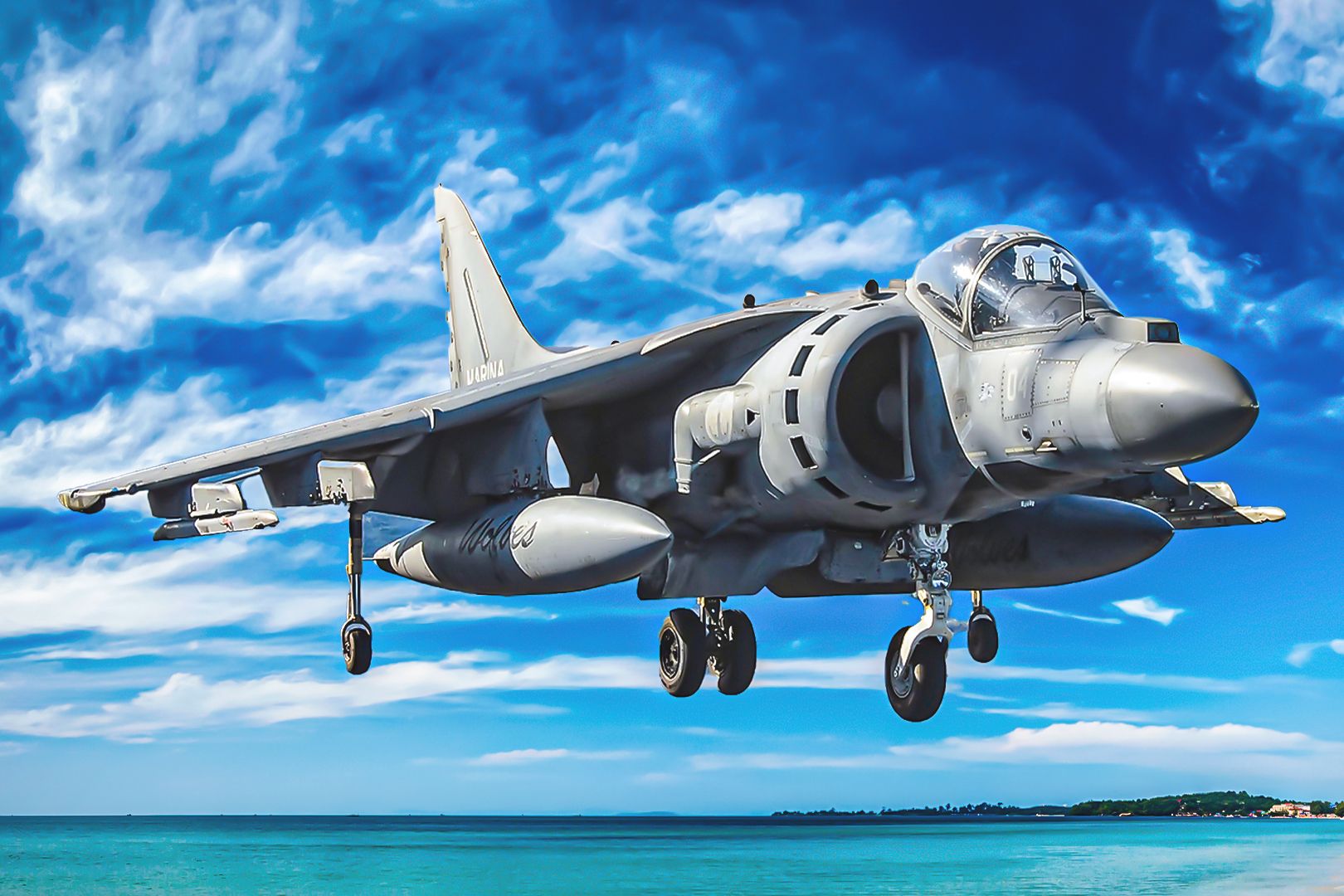
Related
5 V/STOL Capabilities Of The AV-8B Harrier II
The V/STOL capability can enable much more than slow or vertical operations closer to the ground.
“When the Harrier II was first flown in the fall of 1981, 21 years had elapsed since the original Hawker P.1127 first hovered in untethered flight. This basic design, only one of many promising concepts of the time, has weathered its growing up period and reached maturity in the AV-8B.”
Yes, the Boeing Bell V-22 Osprey is also V/STOL aircraft that’s serving with the USMC, but that warbird isn’t a pure fixed-wing aircraft…nor is it a pure rotary-wing platform either. Not to mention that the Osprey (though it does have two machine guns for self-defense) doesn’t wield cannons, bombs, or missiles like the Harrier does.
Operational history: Operation Desert Storm (1991 Persian Gulf War)
The Harrier II actually became the first USMC aircraft to be deployed to “the Sandbox” in preparation for this conflict (Operation Desert Shield, the precursor to Desert Storm), and once the shooting started, it proved itself a superb contributor to the war effort. As MilitaryFactory reports:
“AB-8Bs [sic] were flown against Iraqi ground targets using rockets, air-to-surface missiles and bombs or [sic] various types (napalm, cluster). Sidewinder air-to-air missiles were utilized early on in a defensive role but this need all but dissipated with the death of the Iraqi air force meaning that the AV-8Bs could utilize their pylons for more offensive stores. At the cost of five AV-8Bs, the Harrier II flew in 3,380 sorties and totaled 4.112 hours in 42 days. By war’s end, an estimated six million pounds [2.72 million kg] of ordnance had been delivered by Harrier IIS against Iraqi targets making it one of the more important battlefield elements of the short-lived conflict.”
Those “more offensive stores” would have included the following:
Operational History Part Deux: Operation Allied Force
Just as the Harrier began the decade of the 1990s with a bang (both literally and figuratively), it also ended that decade with a bang, as it participated in Operation Allied Force, the 1999 NATO aerial bombing campaign against then-Serbian strongman Slobodan Milošević intended to dissuade Milošević and his forces from their ethnic cleansing campaign against the Muslim majority populace in Kosovo. Therein, 12 AV-8Bs were split evenly between the 24th and 26th Marine Expeditionary Units (MEU). AV-8Bs of the 24th MEU were introduced into battle on April 14, 1999, and over the next two weeks, they flew 34 combat air support missions over Kosovo.
Operational History Part III: the Global War on Terror (GWOT)
When I say “GWOT,” I include Operation Enduring Freedom (OEF; the Afghanistan campaign), Operation Iraqi Freedom (OIF), and Operation Inherent Resolve (OIR; the campaign against the Islamic State/ISIS/ISIL/Da’aesh terror group).
During OEF, four AV-8Bs of the 15th MEU, operating from ships off the coast of Pakistan, began attack missions into Afghanistan on 3 November 2001, with the 26th MEU and its own Harriers joining in the fight later that month.
For OIF, 76 Harriers were deployed, 60 of which embarked on the amphibious ships USS Bataan (LHD-5) and USS Bonhomme Richard.(LHD-6). Citing USMC statistics, Rebecca Grant of Air and Space Forces Magazine reported back in 2005 that the Harriers logged some 3,000 flight hours and 2,000 short-duration sorties. In the process, the jump jets provided 24-hour support for ground forces, prompting then-USMC commander Lieutenant General Earl B. Hailston to state that :
“The airplane … became the envy of pilots even from my background … there’s an awful lot of things on the Harrier that I’ve found the Hornet pilots asking me [for] … We couldn’t have asked for a better record.”
The warbirds had an 85% mission availability rate during the Iraq War, and when they used the AN/AAQ-28(V) LITENING II targeting pod, they achieved greater than 75% kill effectiveness on targets.
In support of OIR, the warplane first expended ordnance in anger in early September 2014, whereupon a Harrier from the 22nd MEU struck a Da’esh target near the Haditha Dam in Iraq, marking the first time a USMC unit dropped ordnance in the operation. Fast-forward to August 1, 2016, and USMC Harriers from the amphibious assault ship USS Wasp (LHD-1) began strikes against ISIL in Libya as part of manned and unmanned airstrikes on targets near Sirte, launching at least five times within two days.
End of an era
Alas, as the saying goes. “All good things must come to an end.” As a sign of the times, back on March 29, 2024, the USMC graduated its last two student pilots from the 2nd Marine Aircraft Wing (MAW) AV-8B Harrier II Fleet Replacement Detachment (FRD) after completing the AV-8B Harrier II training syllabus at Marine Corps Air Station (MCAS) Cherry Point, North Carolina. As 2nd Lt. John Graham of the 2nd MAW reported at the time:
“Capt. Joshua Corbett, a native of Mendham, New Jersey, and Capt. Sven Jorgensen, a native of Lewisburg, Tennessee, completed their final training flight at the 2nd MAW AV-8B Harrier II FRD and became the last two Marines to receive the 7509 military occupational specialty, which is reserved for AV-8B Harrier II qualified pilots. In addition to marking a milestone for the Marine Corps’ transition to the F-35 Lightning II, the culmination of their training represents a significant event in the Harrier’s legacy.”

